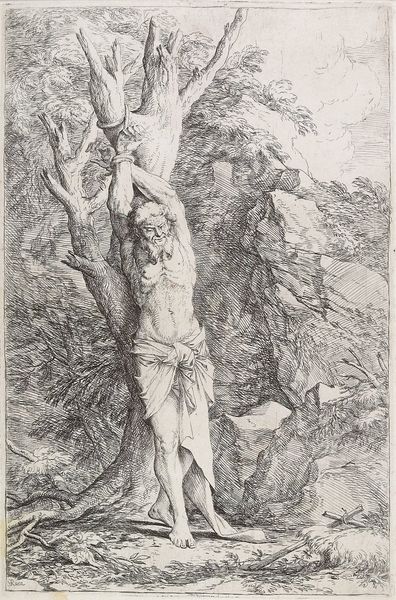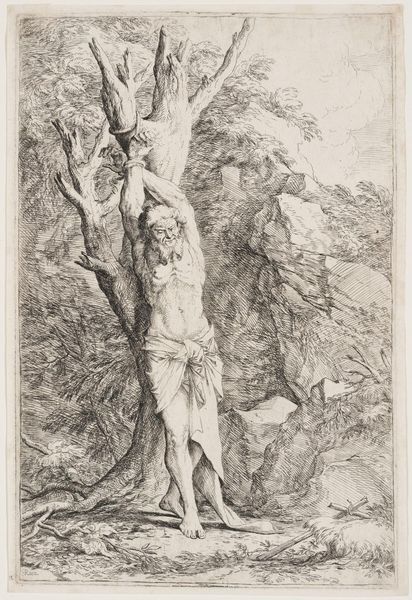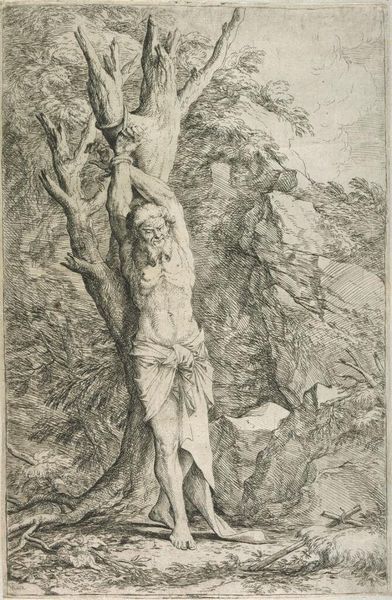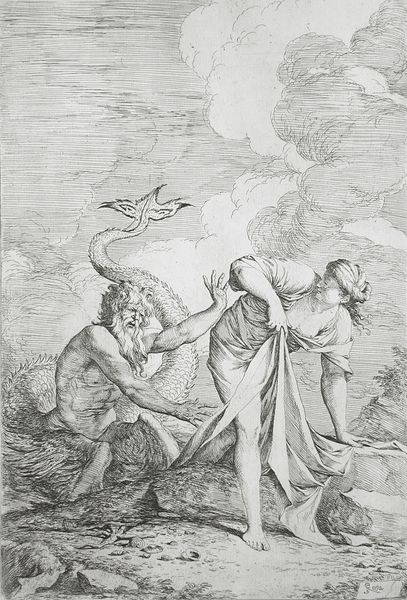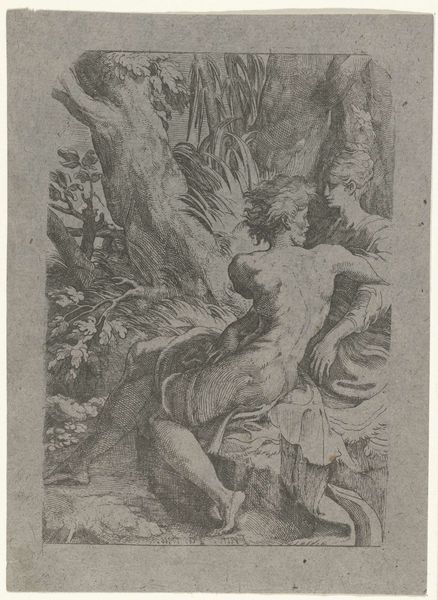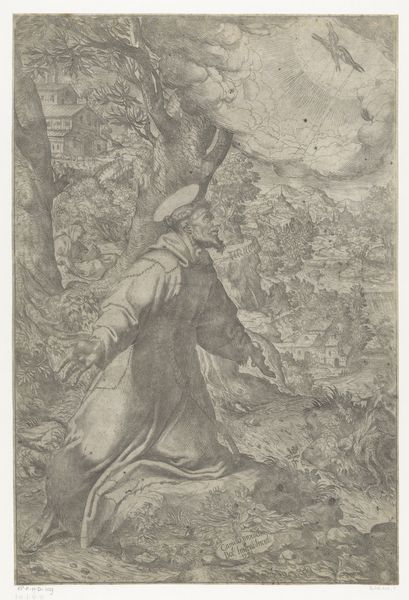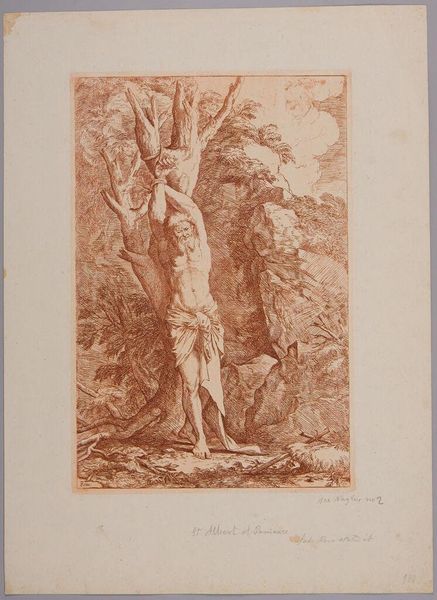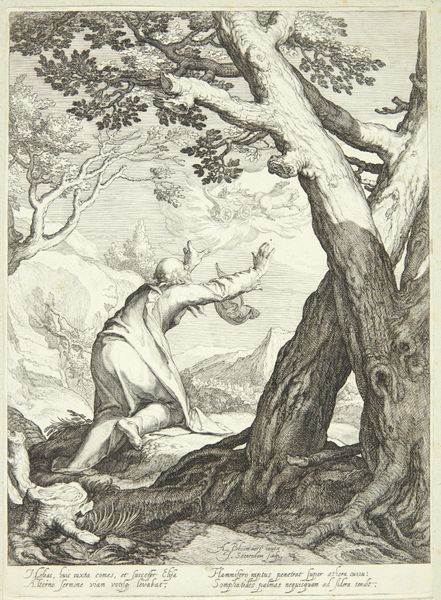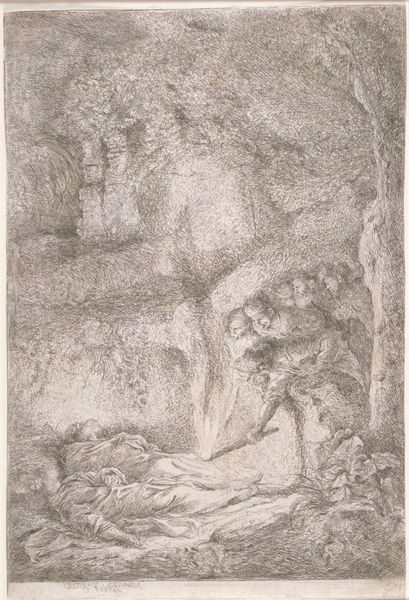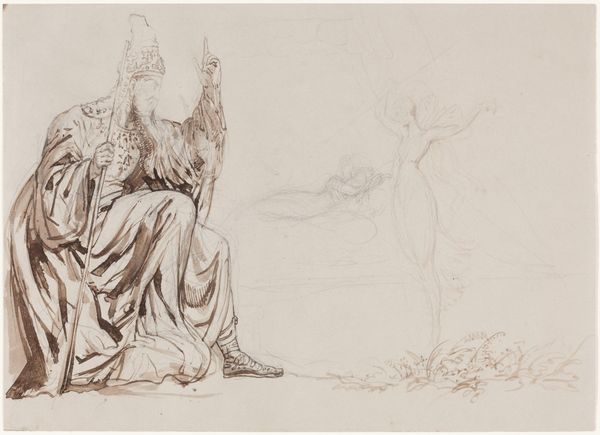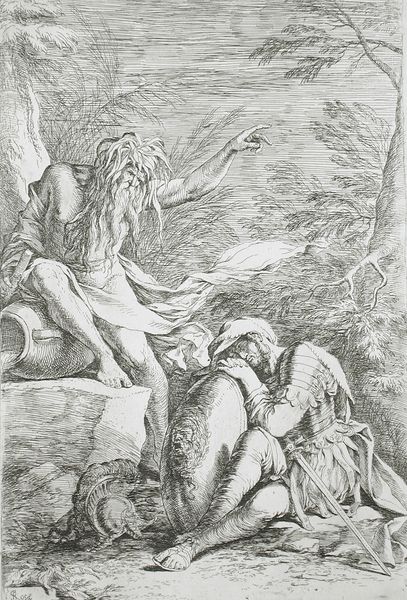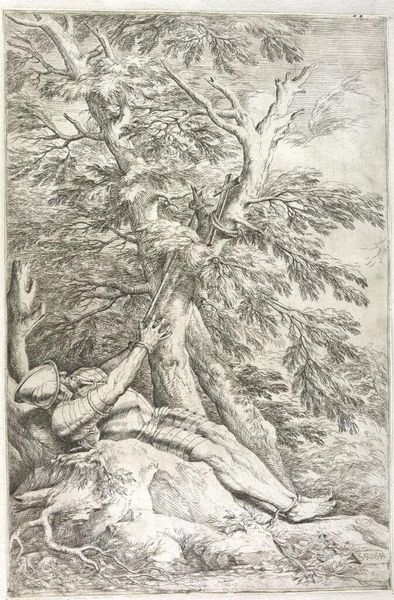
#
pencil drawn
#
tree
#
amateur sketch
#
light pencil work
#
pencil sketch
#
incomplete sketchy
#
charcoal drawing
#
pencil drawing
#
rough sketch
#
pencil work
#
initial sketch
Copyright: Public domain
Curator: I find this image intensely unsettling. Is it just me? Editor: No, I see that. It's a Salvator Rosa, dating to 1661. The work is called "Albert, Companion of Saint William." Currently it resides at LACMA in Los Angeles. Rosa, as we know, often grappled with such raw, emotional subjects. Curator: I see. He looks so raw in his presentation. The lines are so sketch-like, almost frenzied. What exactly are we seeing, material-wise? Is it charcoal, perhaps? The sketchiness has this feeling of incompleteness or rather, the act of hurried making is right in your face. Editor: It's believed to be pencil, yes. Considering the socio-political climate of 17th-century Italy and Rosa’s own rebellious streak, one wonders about the statement being made here. Was this meant as commentary? On suffering? On the church? We see the man hanging tied to a tree, so it can’t have been the nicest moment of Albert's life. Curator: Well, given Rosa’s focus on materials, I wonder if this apparent incompleteness, and raw style, is intentional to make a statement about class? Artworks using humble materials for sacred content was not an innovation then but still an exercise to explore boundaries. What was the social perception for pencil at that time, as a support? Who was art for back then? Editor: Good point. While pencil was used, drawings like these circulated among connoisseurs, who would've understood the historical and hagiographical context. This wouldn't be hanging for everyone in the streets to grasp its commentary, as far as there were some at all. Saint William and his companions were hardly rebellious figures themselves... Curator: Regardless, that Rosa chose this kind of support for such a serious depiction remains significant. It gives it an immediacy. Did it reflect the social status he ascribed to his subjects? He wasn't crafting icons, in the traditional sense. And you would know! Editor: Perhaps! Or, perhaps, he was commenting on the fragility of life itself, in a world increasingly obsessed with power and opulence. Art patronage might play a role as well: do we know how and for whom this piece was made? Curator: Either way, that such strong themes came out of something made of such a humble material is what makes Rosa stand out for me. Editor: It’s a powerful piece indeed, whichever way you slice it, a fascinating glimpse into the religious sensitivities and material practices of the era.
Comments
No comments
Be the first to comment and join the conversation on the ultimate creative platform.
